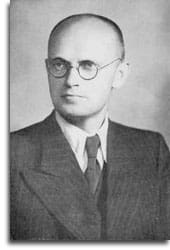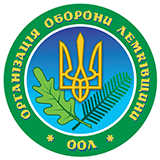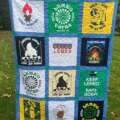
A Ukrainian ethnic group which until 1946 lived in the most western part of Ukraine on both sides of the Carpathian Mountainsand along the Polish-Slovak border (see Lemko region).
The name seems to be derived from the frequent use of the word lem ‘only’ by the Lemkos. They usually call themselves rusnaky or rusyny(Ruthenians). Scholars and the intelligentsia began to use the name Lemko for the western groups of Ukrainian highlanders in the mid-19th century, and by the end of the century some Lemkos had accepted the name. It is not used widely in the Prešov region.
The intrinsic conservatism of the Lemkos preserved them from Polonization but at the same time impeded the rise of Ukrainian national consciousness. The Old Ruthenian cultural mainstream, led mostly by local priests, turned in a Russophile direction in the 1900s and received support from the Russian tsarist government (see Old Ruthenians). The Russophiles stressed education in the Russian spirit and established boarding schools for young Lemkos in Nowy Sącz, Sianik, and Gorlice. The Ukrainian national movement gained strength among the Lemkos only toward the end of the 19th century and was centered in Nowy Sącz and Sianik. Its leading activists were P. Linynsky, Vasyl Yavorsky, M. Kubiiovych, Rev O. Hadzevych, and Rev M. Dorotsky in Nowy Sącz, and Rev O. Konstantynovych, O. Gudzo, V. Buchatsky, V. Konstantynovych, and Y. Lukasevych in Sianik. A struggle arose between the Ukrainian and the Russophile tendencies. Some indication of their relative strength can be found in the fact that by 1912 there were 22 Prosvitareading rooms and 109 branches of the Russophile Kachkovsky Society in the Lemko region. At the same time there were 185 Ukrainian and 32 Polish schools in the region; 170 villages had no schools.
During the First World War the region was the site of several battles (1914–15) and sustained some damage. The Austrian authorities took repressive measures against the Ukrainians, in particular the Lemko Russophiles. The stuggle for Ukrainian statehood promoted the growth of Ukrainian consciousness among the Lemkos. After the demise of the Austro-Hungarian Empire, the Sianik Commissariat of the Western Ukrainian National Republic (ZUNR), headed by Rev P. Shpylka, remained active until mid-February 1919 and became known as the Komancha Republic. At the same time the Russophile group in the western Lemko region proclaimed the so-called Lemko Republic and used its official paper, Rus’ka rada, to agitate for the annexation of the Lemko region by Czechoslovakia.
In the 1920s the Ukrainian movement, supported by young priests and school teachers, began to predominate. Its principal center was Sianik, and its leading figures were Rev I. Kachmar, V. Blavatsky, S. Vanchytsky, and F. Kokovsky. At this time some Lemkos, mostly in the central region, converted to Orthodoxy, which was hostile to the Ukrainian movement. By 1935, of the 145,000 Lemkos in the territory of the Lemko Apostolic Administration, 18,000 were Orthodox. The Polish government attempted to halt the further development of the Ukrainian movement. It supported the Russophiles in order to keep the Lemkos divided and then tried to turn the Lemkos into a Polish ethnic group. The project was carried out under the auspices of the Polish Ministry of War and the Bureau of Nationality Policy under the Presidium of the Council of Ministers. The bureau’s Research Commission for the Eastern Lands, reorganized into a special Lemko section in 1934, was to provide a ‘scientific’ justification for the project. In 1934 the Lemko region was separated from the Peremyshl eparchy and formed into a separate Lemko Apostolic Administration with a Russophile hierarchy. Ukrainian teachers were replaced by Poles. The Lemko dialects and a special Lemko primer were introduced in the schools, and Polish patriotism was stressed. In 1938 the schools became bilingual. The authorities supported the anti-Ukrainian organization Lemko-Soiuz and the Polonophile weekly Łemko (1934–9). In the western Lemko region the links between the Ukrainian co-operatives and their central organization in Lviv, the Audit Union of Ukrainian Co-operatives, were severed, and nearly all the Prosvitareading rooms were closed down. The law on border zones was used as a pretext for deporting nationally conscious Ukrainians from the Lemko region, and Ukrainian organizations were placed under police surveillance. To counteract the Polish policy the Prosvita society in Lviv set up the Lemko Commission. Its task was to promote Ukrainian culture and education in the Lemko region and to disseminate information about the Lemkos among the Ukrainian public. The semimonthly Nash lemko (1934–9) and book series Biblioteka Lemkivshchyny (Library of the Lemko Region) served the same purpose. The Lemkivshchyna Museum was set up in Sianik in 1930. In the United States the Organization for the Defense of Lemkivshchyna was established to support the Ukrainian movement in the Lemko region.
Under the German occupation (from September 1939) the Ukrainian cultural-educational movement developed rapidly despite difficulties. A number of Ukrainian secondary vocational schools in Sianik and Krynytsia (Krynica), a teachers’ seminary in Krynytsia, the Ukrainian educational societies (UOT), and Ukrainian co-operatives were set up. The activists were local Lemkos and Ukrainian refugees from Soviet-occupied Galicia. With the nomination of Rev Oleksander Malynovsky to the post of apostolic administrator and the creation of a separate Lemko Orthodox eparchy under Archbishop Palladii Vydybida-Rudenko, the Russophile influence in religious life was overcome. The Ukrainian Central Committee and its branches—the Ukrainian relief committees in Sianik (under P. Bilaniuk), Krynytsia (under Osyp Navrotsky), and Jasło (under H. Nychka) – oversaw the social and cultural work in the region.
The Soviets occupied the eastern part of the Lemko region in the summer of 1944 and the western part in early 1945. Taking advantage of the war situation the Polish underground assassinated prominent Lemkos and, in the mixed Lemko-Polish areas, even slaughtered Lemkos in mixed villages. Some 4,000 Lemkos had been resettled in the Ukrainian Soviet Socialist Republic in 1940 under the Soviet-German treaty on voluntary population exchange. The resettlement of Lemkos was resumed under the Polish-Soviet agreement of 16 August 1945, which also determined the Polish-Soviet border and finally surrendered the entire northern Lemko region to Poland. The operation was hindered by the Ukrainian Insurgent Army, which was active in the eastern Lemko region from 1944. Under Polish pressure most Lemkos (up to 80 percent) had been moved to Ukraine by mid-1946, and the remainder, with few exceptions, were resettled in 1947 among Poles on former German lands which now belonged to Poland (see Operation Wisła). The depopulated Lemko region was settled partly by Poles, but most of it remained unsettled.
Until 1956 the Lemkos as well as all the other Ukrainians in Poland had no national rights. Ukrainian cultural and educational activity centered around the Ukrainian Social and Cultural Society. In 1957 the supplement Lemkivs’ke slovo was added to the society’s weekly Nashe slovo, and in 1959 a separate section for the development of Lemko culture was established within the society. Only a few Lemkos have been allowed to return to their homeland—by 1957–8 only some 4,000 of the 30,000 to 40,000 Lemkos in Poland. They are dispersed in the Gorlice and Sianikregions and form a majority in only a few villages. The return movement has been halted, although large areas of the Lemko region are uninhabited; in Lisko county, for example, the population density is 25 per sq km, whereas in 1939 it was 70 per sq km. Schools in which Ukrainian is taught are the exception in the Lemko region. Until recently Lemkos did not have their own priests; they often were, and still are, subject to greater discrimination than before the Second World War.
The Lemkos who moved to Ukraine were settled mainly in former Polish villages in the Ternopil, Sambir, and Lviv regions. Some live in the Donbas. In Ukraine, as in Poland, they try to preserve their own folklore, especially their folk songs and dances. But the younger generation is losing its distinctive traits. Some Ukrainian monuments have been preserved in the Polish museums in Sianik, Nowy Sącz, Rzeszów, and Peremyshl as well as in Lviv. Most of them, however, have been destroyed, or, lacking government protection, continue to deteriorate. Representatives of Solidarnosć criticized the Polish authorities for resettling the Lemkos, but most Poles consider the Lemkos to be part of the Polish, not the Ukrainian, nation.
The Lemkos are a distinct ethnic group within the Ukrainian nation. Their dialects and spiritual and material culture preserved some unique archaic elements that have been lost by other Ukrainian ethnic groups. They also absorbed some Slovak and Polish influences, especially linguistic ones (see Lemko dialects). More than any other Ukrainian ethnic group the Lemkos are attached to their homeland, traditions, and church and are impervious to external influence. They are more united than other groups, even when they are outside their native land. The Lemkos form several distinct subgroups. The western Lemkos (roughly from the Duklia Pass in the east) have more archaic characteristics than the eastern Lemkos, who have some features in common with other Ukrainian groups, such as the Boikos.
The Lemkos’ material culture is considerably poorer than that of the Hutsuls. Their culture is more utilitarian. Their homesteads are built of wood and usually consist of a single building, with the corridor separating the living quarters from the stable (photo: Lemko homestead). The sloping bilateral roof is covered with shingles in the western and with straw in the eastern Lemko region. Church architecture is similar to that of the Boikos, except that Lemko churches are topped with external baroque domes and high belfries over the vestibules (photo: Lemko church). Lemko dress is similar to that of the Boikos but is more attractive because of a finer selection of cloth, colors, and embroidery (photo: Lemko folk dress). Lemko womenwear a fancy necklace (sylianka) made of colorful beads. The distinctive men’s overcoat (shuba) is made of homemade felt. The Lemkos are known for their wood carving, which is highly developed in resort areas and around Sianik. Lemko folklore is particularly rich in songs. Most of them, especially the wedding songs and humorous songs, were composed by the Lemkos, but some are variants of widely known Ukrainian folk songs. Slovak folklore had a considerable influence on the Lemkos. Lemko melodies have a remarkable variety of forms, a rich ornamentation, and a wide rhythmic range.
Lemkos in North America. In the 1870s Lemkos from the Prešov regionwere the first Ukrainian immigrants in the United States. Up to the end of the 19th century the majority of Ukrainian immigrants in the country were Lemkos. They were the founders of the first Ukrainian organizations. Because of the large influx of Lemko immigrants up to the 1930s, some 100,000 to 150,000 Americans and Canadians today are of Lemko origin. Their largest concentrations are in Pennsylvania and around Cleveland. The Lemkos in North America are divided into three large camps: the Ruthenian, Ukrainian, and Russophile. The first consists mostly of Lemkos from the Prešov region. The Greek Catholic Lemkos from Transcarpathia (with a few from Galicia) belong to Pittsburgh metropoly; those from Galicia belong to Ukrainian Catholic eparchies. Orthodox Lemkos belong mostly to the Orthodox Church of America and the Carpatho-Ruthenian Greek-Catholic Orthodox Church of America as well as the Ukrainian Orthodox church. Most Lemkos belong to Ruthenian or Russophile, and fewer to the Ukrainian, mutual aid insurance societies. Lemko Association (est 1929) is a relief organization of conservative Russophile Lemkos; the Organization for the Defence of Lemkivshchyna (est 1936) is a Ukrainian patriotic association. The Ukrainophile Lemko press has included the monthly Lemkivs’kyi dzvin (Philadelphia and Passaic, NJ, 1936–9), edited by M. Dudra; Lemkivshchyna (Toronto 1949–52), edited by Yuliian Tarnovych; Holos Lemkivshchyny (Yonkers, NY, 1963–), edited by Stepan Zhenetsky; Lemkivs’ki visti (Yonkers 1958–75 and Toronto 1975–9), edited by S. Zhenetsky and then Yu. Tarnovych; Lemkivshchyna (New York 1979–), edited by U. Liubovych (see Uliana Starosolska), O. Pytliar, and then M. Dupliak; and Lemkovyna (Yonkers 1971–81), edited by S. Kychura. The Russophiles founded Lemko (1928–36) and Karpatska Rus’ (1939–), both organs of the Lemko Association.
BIBLIOGRAPHY
Kolessa, F. ‘Narodni pisni z halyts’koï Lemkivshchyny,’ Etnohrafichnyi zbirnyk NTSh, 39–40 (1929)
Smoleński, J. ‘Łemkowie i Łemkowszczyzna’ Wierchy, 13 (Cracow 1935)
Iadlovs’kyi, S. (ed). Shematyzm hreko-katolyts’koho dukhovenstva Apostol’s’koï administratsiï Lemkivshchyny (Lviv 1936; repr, Stamford 1970)
Reinfuss, R. ‘Łemkowie,’ Wierchy, 14 (Cracow 1936)
Tarnovych, Iu. Lemkivshchyna: Materiial’na kul’tura (Cracow 1941)
Reinfuss, R. ‘Łemkowie jako grupa etnograficzna,’ Prace i materiały etnograficzne, 7 (Wrocław 1948–9)
Shakh, S. Mizh Sianom i Dunaitsem (Munich 1960)
Buchats’kyi, V. Lemky – Ukraïns’ke hirs’ke plemia (Winnipeg 1962)
Lemkin, I. Istoriia Lemkoviny (Yonkers 1969)
Kwilecki, A. Łemkowie: Zagadnienie migracji i asymilacji (Warsaw 1974)
Strumins’kyi, B. (ed). Lemkivshchyna: Zemlia-liudy-istoriia-kul’tura, 2 vols (New York–Paris–Sydney–Toronto 1988)
Wolnicz-Pawłowska, E. Antroponimia łemkowska na tle polskim i słowackim (XVI–XX wiek) (Warsaw 1993)
Horbal, B. Działalność polityczna Łemków na Łemkowszczyźnie, 1918–1921(Wrocław 1997)
Hvozda, I. et al (ed). Lemkivshchyna. Vol 1: Material’na kul’tura (Lviv 1999)
Dudra, S., Halczak, B. et al (eds). Łemkowie, Bojkowie, Rusini: historia, wspołczesność, kultura materialna i duchowa. Vol. 1 (Legnica–Zielona Góra 2007)
Dudra, S., Halczak, B. et al (eds). Łemkowie, Bojkowie, Rusini: historia, wspołczesność, kultura materialna i duchowa. Vol. 2 (Zielona Góra–Słupsk 2009)
Howansky Reilly, Diana. Scattered: The Forced Relocation of Poland’s Ukrainians after World War II (Madison 2013)
[This article originally appeared in the Encyclopedia of Ukraine, vol. 3 (1993).]
Source: Encyclopedia of Ukraine



